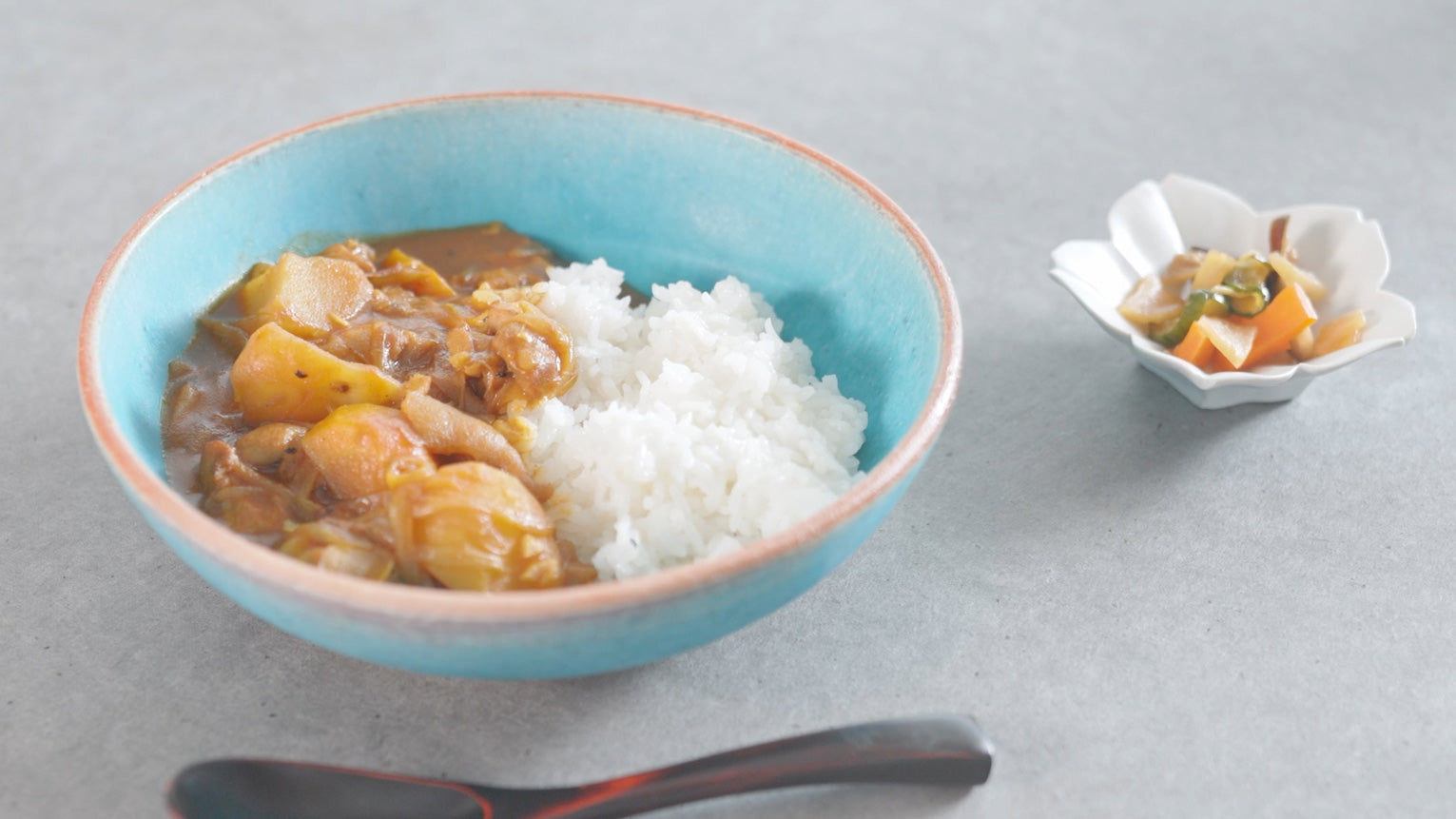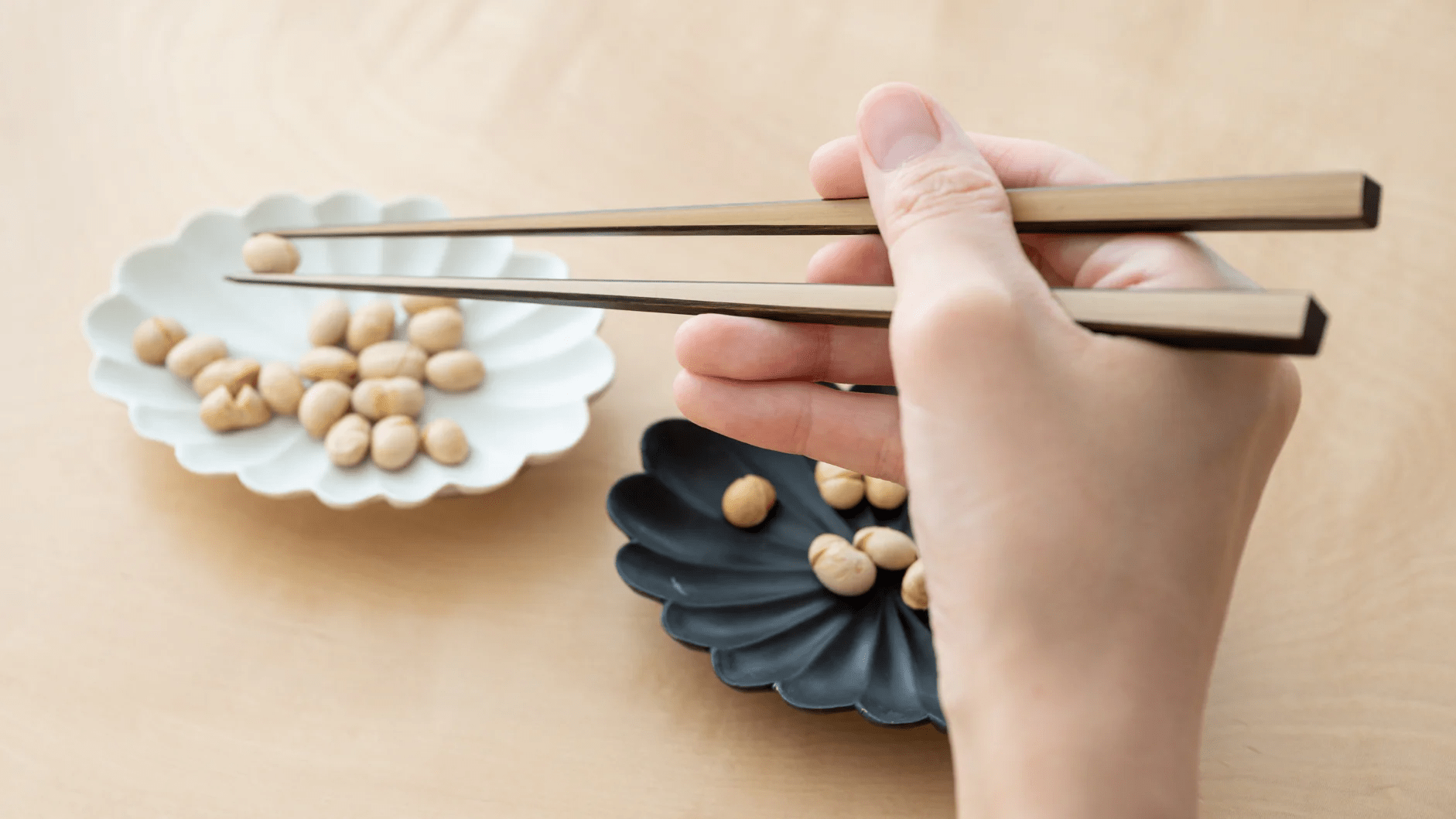
What is Kutani Yoshidaya Style?
Ecrit par Team MUSUBI
Yoshidaya style's charm is its use of translucent pigment and delicate painting style, as well as its refined, extremely skillfully-drawn pictures. It is painted and covered with yellow glaze–the elaborate and fast brushwork bringing a lightness to the painting. Compared to the Ko-Kutani style, which is characterized by strong gosu lines (black contour lines), the Yoshidaya style is more precise and delicate.


The Yoshidaya kiln, where the Yoshidaya style was created, opened in Kutani Village, the birthplace of Ko-Kutani, in order to revive Ko-Kutani ware. However, Yoshidaya-style ware was not just an imitation, and many original works of high artistic quality were produced in the Ko-Kutani Aote style (blue-based overglaze porcelain). The paints used in Yoshidaya style are more subdued and austere than those of Ko-Kutani, and the balance of each color blends well together.
Additionally, the woven pattern is covered with Nanako Komon (fine round shapes) and dots, which complement the main pattern. Though the use of round and dotted patterns differ from piece to piece, it's said painting them onto blank spaces creates a depth in the design. The main patterns are varied: from flowers, birds, landscapes, and people to dyed patterns–charming the viewer's mind and spirit.
Yoshidaya Kiln (1824-31) and Toyoda Den-emon
Yoshidaya kiln was built in 1824 beside the Kutani kiln in Kutani Village by Toyoda Den-emon. He was a wealthy merchant of the Daishoji clan and a man of great culture. In his later years, he retired and devoted himself to pottery making. At the age of 72, Toyoda decided to recreate Ko-Kutani ware and opened a kiln in Kutani Village with his own private funds. Although he knew that it would not be profitable to open a kiln in Kutani Village, which was located deep in the mountains and not easy to access, he dared to take the risk. This was because he wanted to demonstrate his strong desire to reproduce Kutani ware by building the Yoshidaya kiln beside the Kutani kiln within the village.
Yoshidaya-style works were well received by aristocrats and intellectuals of the time for their artistry and quality that came close to that of Ko-Kutani ware. However, the pursuit of quality without regard to profitability caused the Yoshidaya kiln's business to suffer, and although the kiln was moved to the town of Yamashiro, where transportation was more convenient, it regrettably closed after about seven years in 1831.


Yoshidaya-style tableware holds a strong presence at the dinner table and goes well with simple arrangements. Please click the banner below to view our Yoshidaya-style items.















6 commentaires
Phillup We are so glad that you are very eager to explain your precious vase that was gifted by your dear son. We replied to your previous comment but we would like to contact you from our email address of 【infomusubikiln.com】so please check your inbox when it is possible for you!
Team Musubi
@Phillup Thank you very much for your color clarification. Your dragon is more towards green! We would like to see it!
Team Musubi
Phillup We enjoyed your writings about your vase. It was so detailed that we could tell that you love the vase. We would like to contact you from our email of 【infomusubikiln.com】so that we could communicate better/easier! Please check your inbox when it is possible for you!
Team Musubi
Please forgive this old man. I revised my post, and thank you again for your time!
Thank you for your help!🥰🤗🖖
My son purchased for my birthday an old Kutani jar, or vase if you prefer. It seems to be a masterpiece. It has the five colors, with the red being a sort of flat non glassy enamel! It has the green kukufuku mark on the bottom. It is made of stoneware that is so heavy it feels like it is filled with sand, and it is empty. 9” tall, and no chips, or cracks. I would like a positive date of manufacture, and place of manufacture. I just read an article that seems to identify that no over glaze was found in shards at the old Kutani kiln site. Plus point’s out that all old Kutani that is surviving is Arita manufactured. This has my head spinning 😵💫. Back to my vase. It seems to be very rare thing.
Forgive me my ignorance. It seems to be in a Aote style of the Edo period. It is not flowers, birds, trees, or people! 🤔 It has a large, and long three clawed Japanese dragon floating all around the entire jar, through a yellow background of vortex interlocking pattern. The dragon has red fire flying off the body, and a red tongue. Smiling like a Korean dragon. There are what appears to be clouds of every combination of the classic colors except red. There are a number of sunburst, or flaming pearl with the same varying combinations purple, light green, and dark blue, and black. No single one is the same. Nothing boring about this jar. The color slaps you in the face. 😁 The dragon also floats above a dark blue water, that is jumping up from the bottom, boiling like a storm, with black line decoration through it. Last it has a vary pleasurable ice crackle through out the jar in every color except red. I have search everywhere for another KoKutni like this, and have found non. It seem to have a white under glaze on the inside. It has a three-de magical effect to it. Every part of the jar is covered in enamel except the foot. If you would like photos please send me email link to send them.
Thank you for your time!
Phillup Brinkman
Phillup Brinkman
Ware I say light blue on the Kutani dragon vase, it is actually green. Please change that for me phillup
Phillup
Thank you for your help!🥰🤗🖖
My son purchased for my birthday an old Kutani jar, or vase if you prefer. It seems to be a masterpiece. It has the five colors, with the red being a sort of flat non glassy enamel! It has the green kukufuku mark on the bottom. It is made of stoneware that is so heavy it feels like it is filled with sand, and it is empty. 9” tall, and no chips, or cracks. I would like a positive date of manufacture, and place of manufacture. I just read an article that seems to identify that no overgrazing was found in shards at the old Kutani kiln site. Plus point’s out that all old Kutani that is surviving is Arita manufactured. This has my head spinning 😵💫. Back to my vase. It seems to be very rare thing.
Forgive me my ignorance. It seems to be in a Aote style of the Edo period. It is not flowers, birds, trees, or people! 🤔 It has a large, and long three clawed Japanese dragon floating all around the entire jar, through a yellow background of vortex interlocking pattern. The dragon has red fire flying off the body, and a red tongue. Smiling like a Korean dragon. There are what appears to be clouds of every combination of the classic colors except red. There are a number of sunburst, or flaming pearl with the same varying combinations purple, light blue and dark blue, and black. No single one is the same. Nothing boring about this jar. The color slaps you in the face. 😁 The dragon also floats above a dark blue water, that is jumping up from the bottom, boiling like a storm, with black line decoration through it. Last it has a vary pleasurable ice crackle through out the jar in every color except red. I have search everywhere for another KoKutni like this, and have found non. It seem to have a white under glaze on the inside. It has a three-de magical effect to it. If you would like photos please send me email link to send them.
Thank you for your time!
Phillup Brinkman
Phillup Brinkman
Laisser un commentaire
Ce site est protégé par hCaptcha, et la Politique de confidentialité et les Conditions de service de hCaptcha s’appliquent.